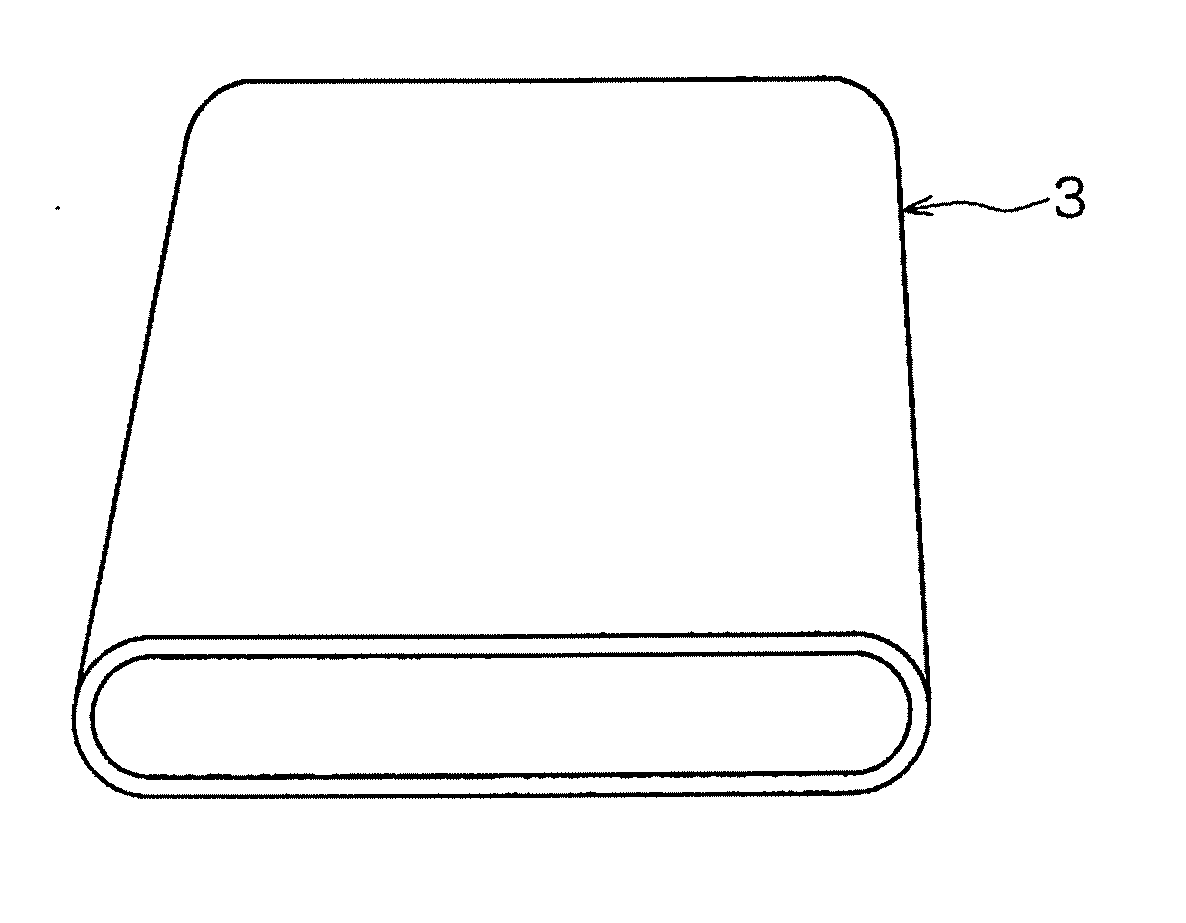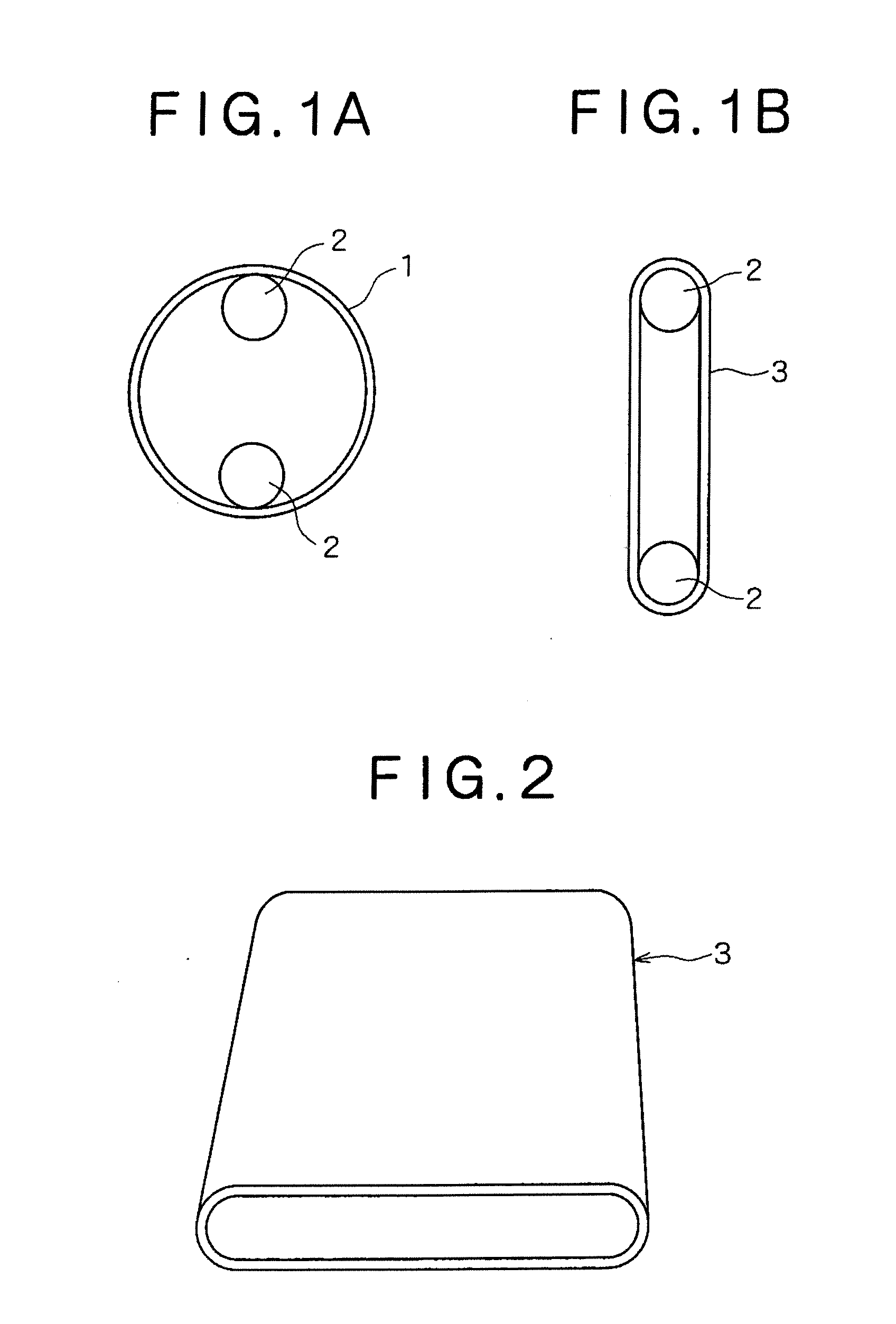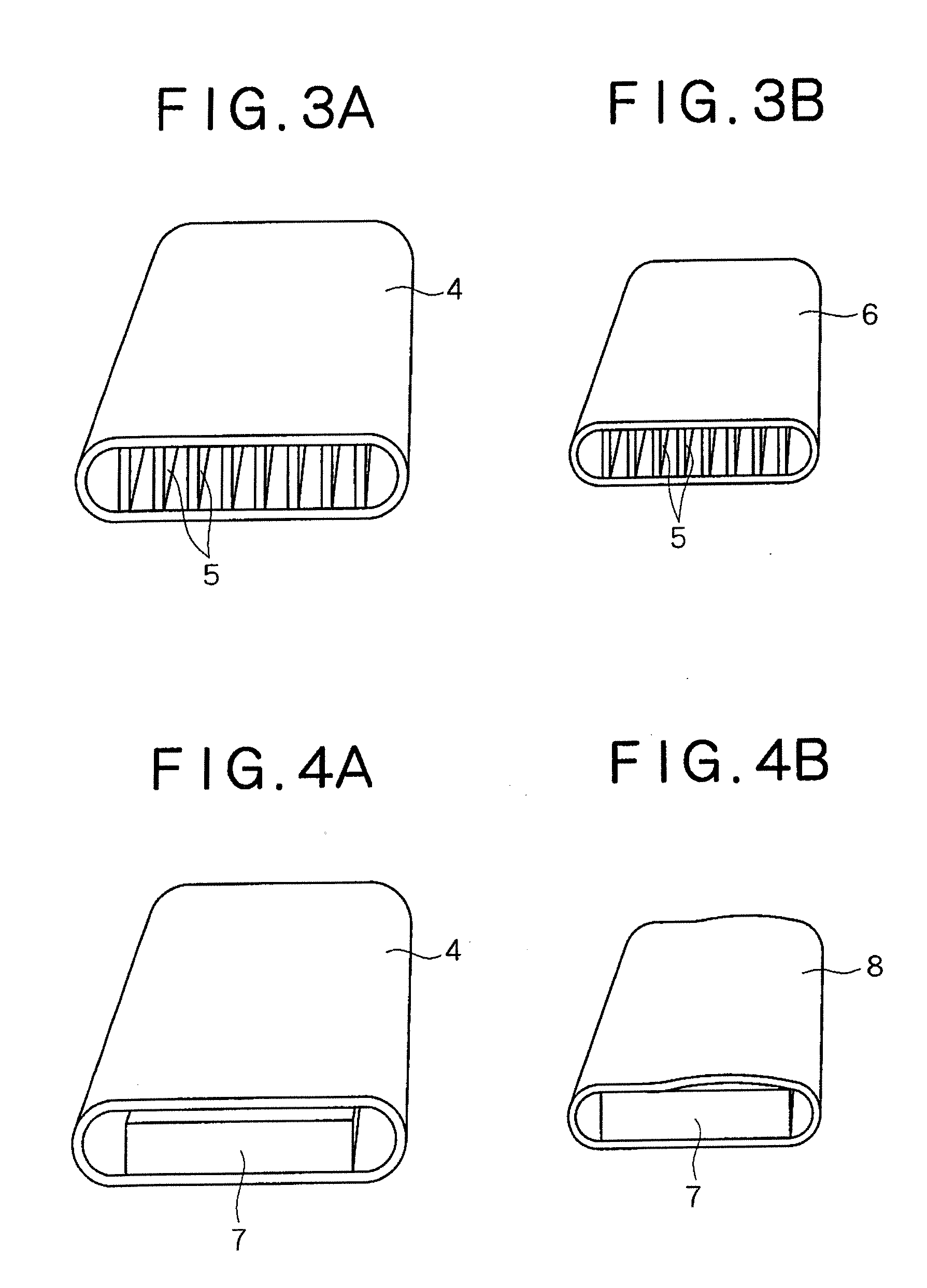Glass-like carbon deformed molded article, process for producing the same, and joint structure for jointing a connecting member to a glass-like carbon hollow molded article
a glass-like carbon and hollow molded technology, applied in the field of glass-like carbon deformation molded articles, can solve the problems of low moldability of thermosetting resin raw material, high precision of glass-like carbon members, and difficulty in fabricating glass-like carbon members having complicated shapes, etc., to achieve good corrosion resistance and strength, good dimensional accuracy, and relative ease
- Summary
- Abstract
- Description
- Claims
- Application Information
AI Technical Summary
Benefits of technology
Problems solved by technology
Method used
Image
Examples
example 1
[0097] A commercially available liquid phenol resin (Resitop PL-4804, manufactured by Gunei Chemical Industry Co., Ltd.) was subjected to heat treatment at 100° C. under a reduced pressure for 1 hour to adjust the water content therein. The resultant was used as a raw material of glass-like carbon. A centrifugal molding die having an inside diameter of 325 mm and a length of 1600 mm was used to mold this raw material by centrifugal molding, thereby yielding a phenol resin cylinder of 320 mm diameter and 3.5 mm thickness. The glass transition point thereof was 65° C.
[0098] The resultant cylinder was cut into a length of 600 mm. As illustrated in FIGS. 1, two stainless steel pipes (rodlike tools) of 60 mm outside diameter and 600 mm length were inserted into the cut cylinder. One thereof was put so as to hold the cylinder and the other was put as a load on the bottom of the cylinder (see FIG. 1A). In this state, the cylinder was heated at 90° C. for 5 hours to yield a phenol resin de...
example 2
Example wherein a flange was jointed to an end of a pipe
[0099] A phenol resin deformed cylinder having a section in a track form was yielded by the same production process as in Example 1. Separately, the same raw material as used in Example 1 was used and molded into a phenol resin pipe of 3 mm thickness by centrifugal molding. The molded pipe was cut open to yield a phenol resin plate of 3 mm thickness. From this plate, a resin plate in a track and doughnut form was cut out, which had a width of 86 mm, a parallel portion length of 425 mm and a circular portion radius of 33 mm, and had, at the center thereof, a hole having a shape equal to the external shape of the above-mentioned track-form phenol resin deformed cylinder. The two members were jointed to each other with a phenol resin, and the resultant was carbonized in the same usual way as in Example 1, so as to yield a glass-like carbon deformed pipe, 480 mm in total length, having a section composed of circular portions of 48...
example 3
Example wherein a core was used
[0100] A commercially available liquid phenol resin (Resitop PL-4804, manufactured by Gunei Chemical Industry Co., Ltd.) was subjected to heat treatment at 100° C. under a reduced pressure for 1 hour to adjust the water content therein. The resultant was used as a raw material of glass-like carbon. A centrifugal molding die having an inside diameter of 325 mm and a length of 1600 mm was used to mold this raw material by centrifugal molding, thereby yielding a phenol resin cylinder of 320 mm diameter and 3.5 mm thickness.
[0101] The resultant cylinder was cut into a length of 500 mm. As illustrated in FIGS. 1, two stainless steel pipes (rodlike tools) of 60 mm outside diameter and 600 mm length were inserted into the cut cylinder. One thereof was put so as to hold the cylinder and the other was put as a load on the bottom of the cylinder (see FIG. 1A). In this state, the cylinder was heated at 90°C. for 5 hours to yield a phenol resin deformed cylinder...
PUM
| Property | Measurement | Unit |
|---|---|---|
| resisting temperature | aaaaa | aaaaa |
| temperature | aaaaa | aaaaa |
| thickness | aaaaa | aaaaa |
Abstract
Description
Claims
Application Information
 Login to View More
Login to View More - R&D
- Intellectual Property
- Life Sciences
- Materials
- Tech Scout
- Unparalleled Data Quality
- Higher Quality Content
- 60% Fewer Hallucinations
Browse by: Latest US Patents, China's latest patents, Technical Efficacy Thesaurus, Application Domain, Technology Topic, Popular Technical Reports.
© 2025 PatSnap. All rights reserved.Legal|Privacy policy|Modern Slavery Act Transparency Statement|Sitemap|About US| Contact US: help@patsnap.com



